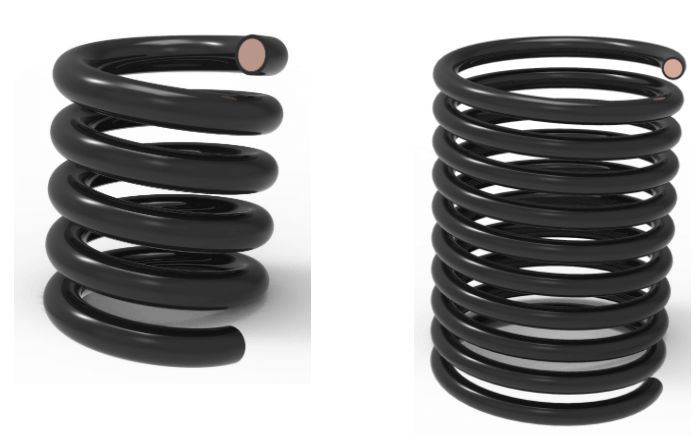How to design Immersion Heaters for Fluids
Last updated on May 13th, 2025 at 06:23 am
The design and the features of immersion heaters can vary greatly, making them valuable in different segments of the industry. Immersion heaters operate mostly under conduction and convection modes when immersed into fluids. Depending on the physical and chemical properties of the fluids, the shapes, materials of construction, and the positioning of the immersion heaters are optimized to deliver the desired heating output. Various shapes of immersion heaters are possible, but it is wise to always calculate the ideal design per case.
How to design Immersion Heaters for Fluids?
The key to successful heating continuously flowing liquid is the accurate dissipation of heat at an acceptable rate required both under steady and dynamic state conditions. For example, while in a steady static state the accurate calculation of heating needs might be suitable, however in a dynamic mode the situation greatly changes leaving a required thermal response time more crucial from the immersed heaters.
Dynamic cases might require specific geometric shapes with higher surface areas and more external surface areas are required. Examples of this are coiled tubular elements. When using coiled tubular heating elements, more heat is transferred to the fluid reducing heat-up time while maintaining a lower watt density.
Coil Tubular Element Designs
Figure 1 displays two designs for a coiled shaped tubular element. In the first case, image (a), a wider tubular element with a 0.475-inch diameter is shown, compared to image (b) showing a similar coil with a 0.260-inch diameter.
Image B can be more appropriate for applications requiring faster heat-up. This is because the liquid preheated by the coil is exposed to more surface area in a coil. Thus, allowing for more efficient heat transfer.
There are possible pitfalls of such design changes. More spirals can produce different effects on the fluid flows, such as more friction that can restrict liquid flow depending on viscosity.

Figure 1: (a) a wider tubular element (0.475 inch dia), (b) a smaller tubular element (0.260) (image is for illustration purposes only and does not illustrate the resistance coil or MgO).
A distinct application of tubular elements is the depolymerization of commercial plastic wastes. The de-polymerization or reversing of polymerization is a thermal or a catalytic process that requires thermal activity to promote a chemical reaction. Using an almost immediate heat source, immersion heaters have a quick response time and are ideal solutions for this industrial process.
Composition of Plastics
One factor that affects the preheating process and immersion heater design, plastic composition. Most common plastics found in such streams are Low Density Polyethylene [LDPE], High Density Polyethylene [HDPE], Poly Styrene [PS], Poly Vinyl Chloride [PVC], Polyethylene Terephthalate [PET], and others. Each polymer has different characteristics and exhibits different melting points. Calculating the precise temperature requirement – taking into consideration molecular weight (for example) for the necessary heat transfer is key not only for a proper application but also for safety as well.
The preheating of the polymeric mix aims at providing just enough thermal energy to liquefy all the polymeric components before they enter a thermal or catalytic fixed bed, fluidized bed, or even a CSTR reactor, where the pyrolysis will produce monomers of the plastic input stream. The fluidization of the initially solid stream is the most important part of the de- polymerization process since it allows for:
- Controlled viscosity in the reactor inlet
- Controlled density in the reactor inlet
- Complete mixing capacity of the previously solid mixture
- Ability to use a CSTR or a fixed/ fluidized bed
- Efficient removal of char and other solids produced, early in the reactor, thus minimizing blocking and efficiency loss
Optimization of Immersion Heating
The preheating processes are optimized and designed based on the actual concentration of each component, its TGA features (mostly onset of degradation temperature), and flow rates. Optimization of immersion heating comprises a dynamic solution of a complex system of equations that include:
- Rate of heat adsorption of each component at each temperature below the melting range; this depends on the individual k coefficients of each component, its melting range, and the flow of each polymer. For a complete dynamic analysis, the solid size distributions also affect the heat adsorption.
- Rate of heat adsorption for each component within the melting temperature range. The situation is complex since the enthalpy for the phase change is delivered in a range of temperatures. Depending on the molecular weight distributions of each polymer in the mix, this enthalpy can be delivered in a very uneven manner, causing great complications in the heat transfer prediction, and thus making the design of the immersion heater very demanding in terms of response times.
- Kinetic viscosity changes around the heater affect the flow profile, the velocity profile, and thus the heat transfer requirements
Also read: 5 Design Factors that Determine Heater Element Efficacy
Creating a Task Model
Perhaps the most challenging task is to create a model that predicts the heat transfer requirement. This is necessary to design and develop the most suitable immersion heater for any application. The most common way to succeed in such an attempt is to use TGA data for all components of the solid polymeric mix, create and solve the coupled equations in an environment with high mathematical capabilities, such as MatLab, and finally design the immersion heater that:
- Can produce a dynamic, controlled heating response
- Can produce rapid corrections to heat transfer
- Does not create obstacles to the solid dispersion flow
